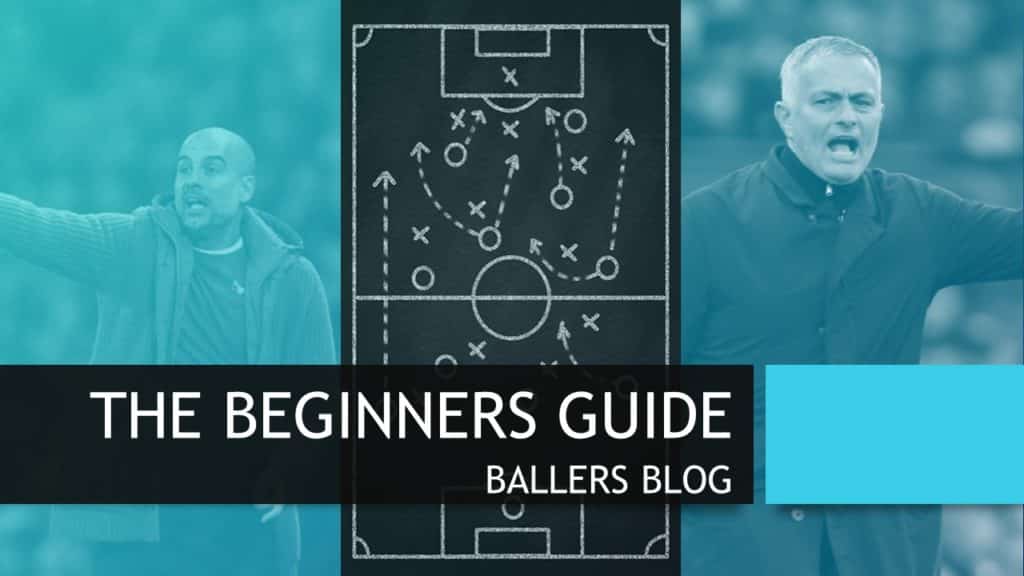As we’re now two and a half years into Project Baller, we have a number of teams who’ve been with us for a while who have been able to establish their own way of playing. While we have divisions on each night to allow new teams to come in at a standard that hopefully suits them, any team that is brand new to the 6-a-side game will find themselves playing catch up in terms of how to best set themselves up. If you’re looking to get the lads together this year to get your first small sided team set up, or if you’ve played before but have a new set of lads, here’s some pointers that should hopefully allow a team of average players to get themselves set up to be competitive right from day 1…..
In the early days it is probably best to channel your inner Mourinho, rather than your inner Pep….
THE BASICS
Get behind the ball
While you are trying to work out your teams best way to play, the best way to start is to plan to concede as few goals as possible. An ideal start point is to go with the basic idea that when you give the ball away, immediately get as many players back behind the ball as you can. If you can avoid giving your opposition the time and space to play in your half of the pitch, you give yourselves the best chance of being competitive in those early games
Stick with your man
6’s is a lot different to 11’s, you can’t carry too many players who aren’t willing to do the work, so when you’ve picked up your man you need to stick with them. None of this zonal marking nonsense, pick your man, stick with them, and work your backside off to get back to them if they get away.
Split from the keeper
This is small sided 101. When your keeper has ball in hand or a goal kick, you need players to split either side of the goal area to give the keeper options of playing the ball out from the back. The opposition will probably retreat back towards their own half at this point, but if they leave players up to stop you from playing the ball out this way, it’s best that you DON’T PLAY A SHORT PASS OUT INTO THE MIDDLE OF THE PITCH! If you try a short pass to a player inside your own half and that player loses the ball, the two defenders being split either side of the keeper will leave the opposition player with a free shot on goal. If the short pass is cut off, it’s best to go long.
Have an ‘out’ ball
It’s likely that every team you play against will leave someone at the back at all times, so you have the option of leaving someone up (this player still needs to be able to track the oppositions ‘last man’ if and when he gets the ball). When your team is under pressure it’s important that this player takes up a position where he is at least able to make life difficult for the opposition when the long ball gets played out. This means working across the width of the pitch depending on where the ball is in order to offer up the option of a ball being played down the line.
COMMUNICATION
Have a ‘talker,’ preferably someone at the back with a full view of everything. Ideally, the keeper is best placed to do this as they really can see everything, but if they aren’t the loudest or the most talkative, it is probably best being a defensive outfield player. The nominated player needs to be talking almost non-stop, keeping players on their toes and letting them know where the opposition players are going, who should be picking up who, and generally encouraging their players to keep going. Individually everyone needs to be talking to each other as well, it maybe that you need to ‘hand a player over’ to one of your team mates while you go and pick up someone else. Make sure you tell your team mates what you’re doing, otherwise it looks like you’re just going for a wander!
BE SUPPORTIVE
I’m not sure I’ve ever known any player get considerably better by having his team mates giving him a load of grief every time he gives the ball away. You’re all part of the same team and should all want the same thing. The early days are likely to be the most difficult, and also the time where players decide it might not be for them, so treat these early games as the learning curves they are, be positive and support each other when players make mistakes, and remember the chances are that the team you’re playing against have been doing this a lot longer than you! If you’re wanting to join a league for a new season, you’re best off taking up the option of any friendlies that might come up in the meantime, so you can get the team used to the style of 6’s before the real thing kicks off!
DON’T OVERPLAY
Unless you actually have your own David Silva or Kevin De Bruyne, chances are you’re going to want to throw Pep’s philosophy out of the window in your early days. An insistence on passing the ball around at the back is likely to see you giving the ball away in dangerous areas, so as soon as you’re in trouble you’re best off sending the ball down the line or putting the ball out of play so you can regroup, rather than trying a risky back pass to your keeper. You’re much better off making yourself hard to beat in the early games, as setting up to be destructive is a lot easier than going all out to play a peak Barca style game.
DON’T GIVE UP!
The first few weeks are going to be the most difficult, and as long as you realise that before you start you should be ok. What you don’t want to do in those early weeks is let a 4-5 goal deficit turn into a 9-10 goal defeat. If you’re 4-5 goals down with 10 minutes to go, it’s fair to say that the game is lost, but with 6-a-side football requiring a very specific type of fitness, you can at least work on that fitness by keeping on going right until the final whistle.
IS THERE ANYTHING YOU’D LIKE TO ADD? ANYTHING YOU THINK WE’VE MISSED? IF SO, LET US KNOW.

